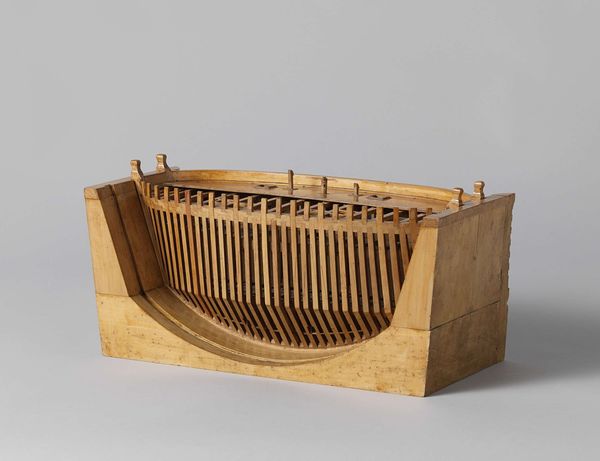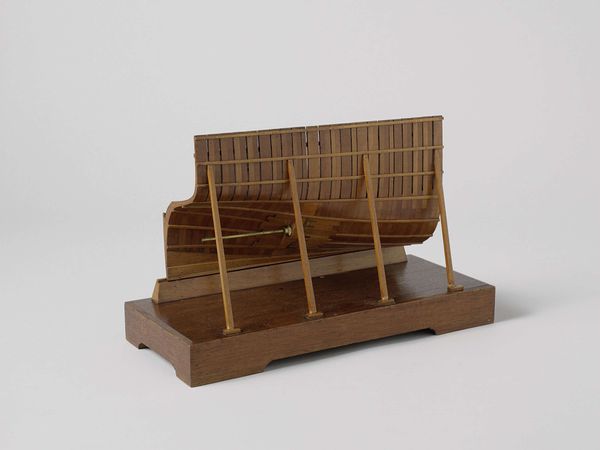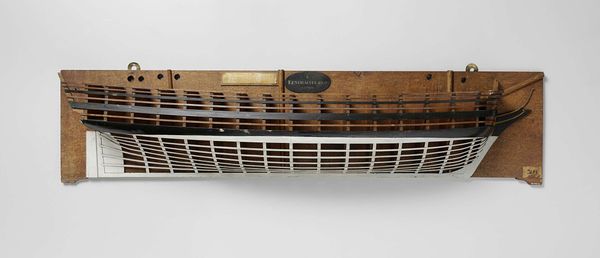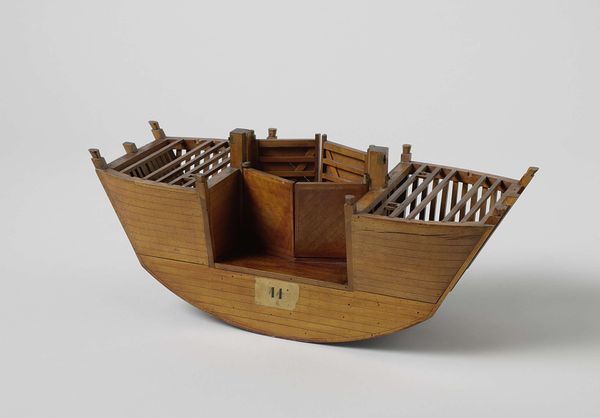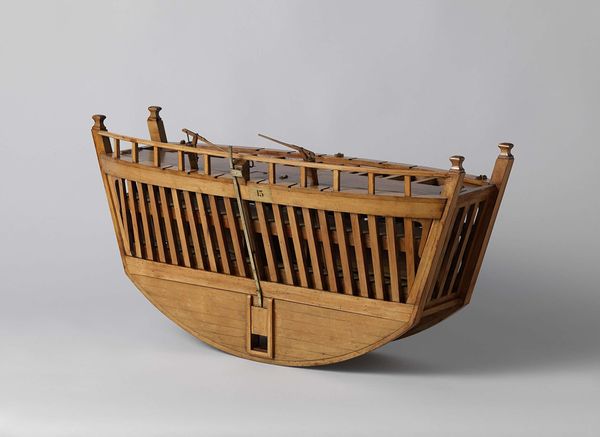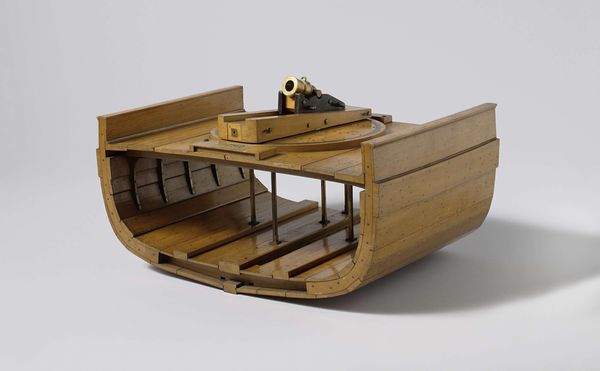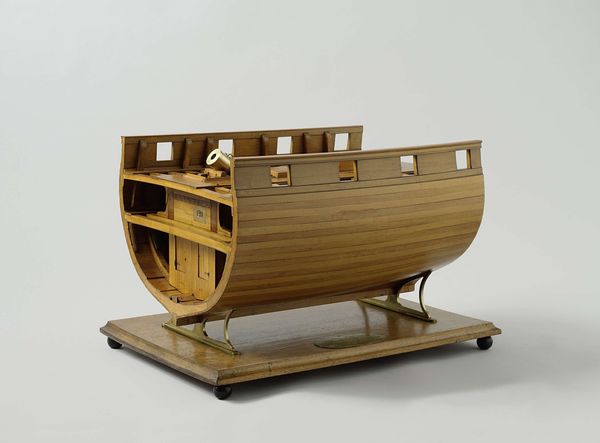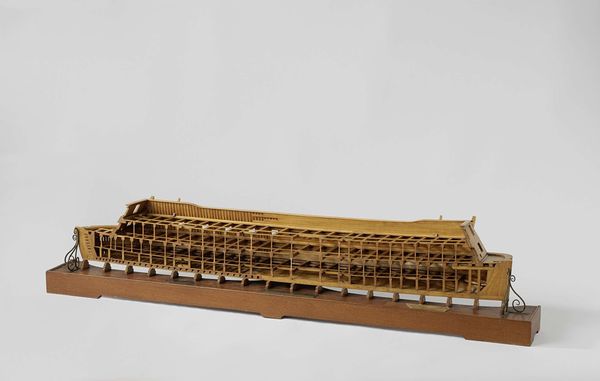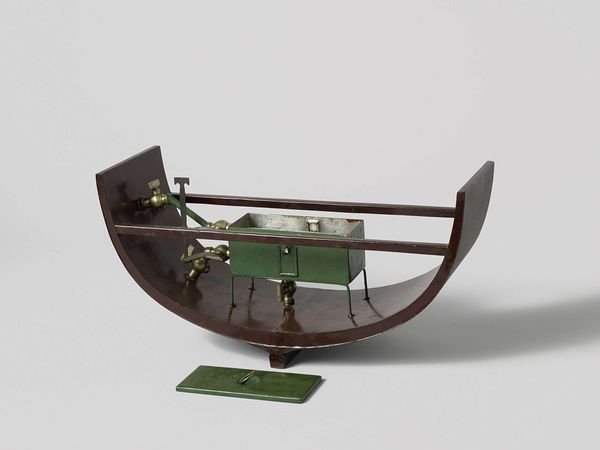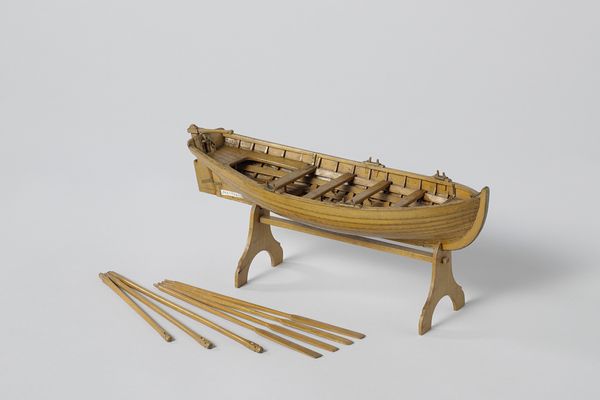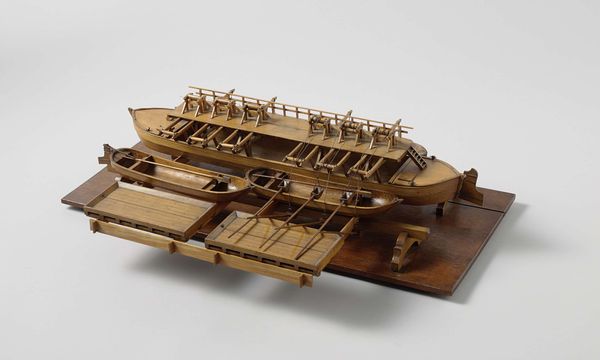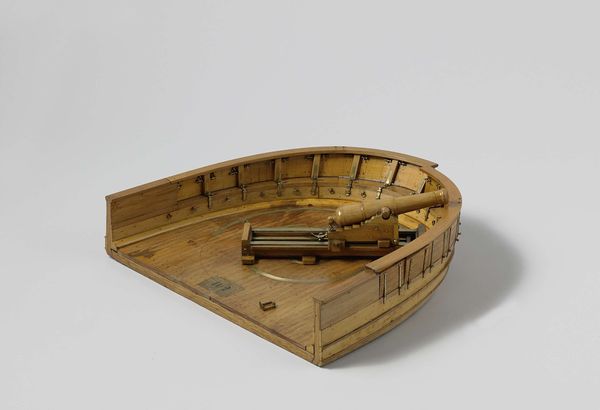
sculpture, wood, architecture
#
architectural modelling rendering
#
architectural diagram
#
architectural plan
#
structure design
#
sculpture
#
architect
#
architecture model
#
architectural section drawing
#
wood
#
architectural proposal
#
cut-out
#
prototype of a building
#
architecture
Dimensions: model height 35 cm, model width 116.9 cm, model depth 39.5 cm, packaging capsule height 40 cm, packaging capsule width 120.5 cm, packaging capsule depth 41 cm
Copyright: Rijks Museum: Open Domain
Curator: Here we have a "Model of a 74-Gun Ship of the Line," dating back to about 1833, crafted at the Rijkswerf Vlissingen. What catches your eye first? Editor: It’s skeletal, almost ghostly. I'm struck by this ship model’s intense vulnerability—its hollowness. Is this typical? Curator: Quite the opposite. These models, constructed of wood, weren't intended as art. They were design blueprints. They revealed a ship’s internal structure to builders, an aid in standardizing shipbuilding across the Dutch Royal Navy. Editor: That context radically changes how I see it. The gridded interior starts speaking of labor, of enslaved hands on colonized land used for timber. And seventy-four guns? Whose lives did this ship end? The sea lanes it protected were veins of commerce and conquest, right? Curator: Precisely. Consider how naval power was intertwined with colonial expansion. Ships like these carried not just goods but ideologies, solidifying European dominance on a global scale. A ship isn't just a ship; it's a symbol of power projection and violence. Editor: Yes, and the cross-sections and repetitive framework are potent symbols. It reminds me of early systems diagrams that charted not just waters, but human interaction and resource extraction. Are the gun placements deliberate? Curator: The number 74 denoted the number of cannons it held. Its size was optimal, as it was very stable in battle. The symbolism lies not only in this detail, but its repetition and uniformity. Each gun, each compartment representing the brutal, regimented reality of naval combat and societal control. Editor: So even in this unadorned state, devoid of flags and triumphant sails, it evokes centuries of geopolitical maneuvering. It's fascinating to peel back the layers of what seems like a mere object. Curator: Exactly. It serves as a reminder that objects carry embedded narratives—sometimes intentionally, sometimes not—reflecting the values and power dynamics of their time. Editor: It began as a peek into engineering, but now it feels like I'm peering into a system of control and power that has shaped our current landscape. Curator: That’s the crucial element: to acknowledge and grapple with these difficult histories.
Comments
No comments
Be the first to comment and join the conversation on the ultimate creative platform.
